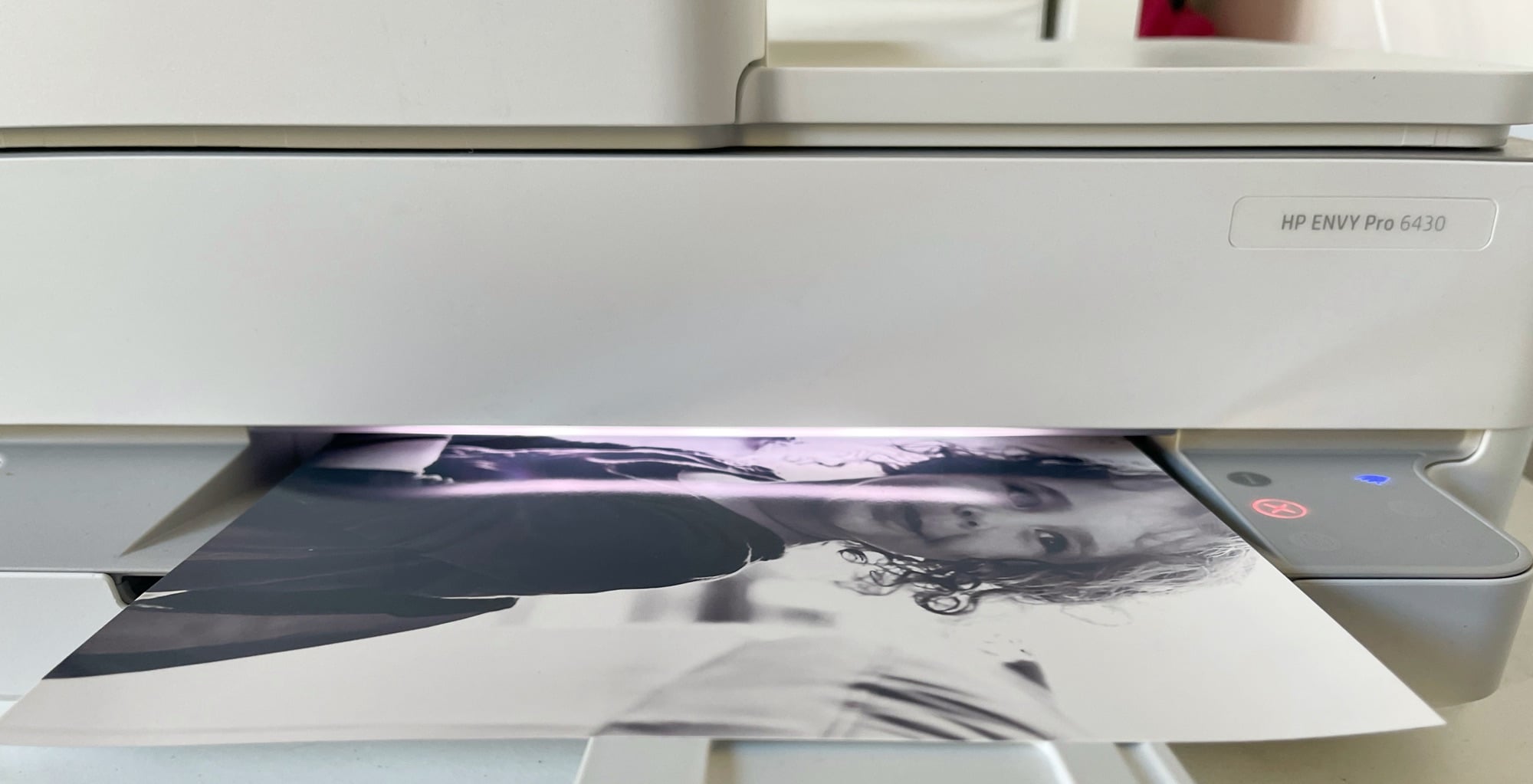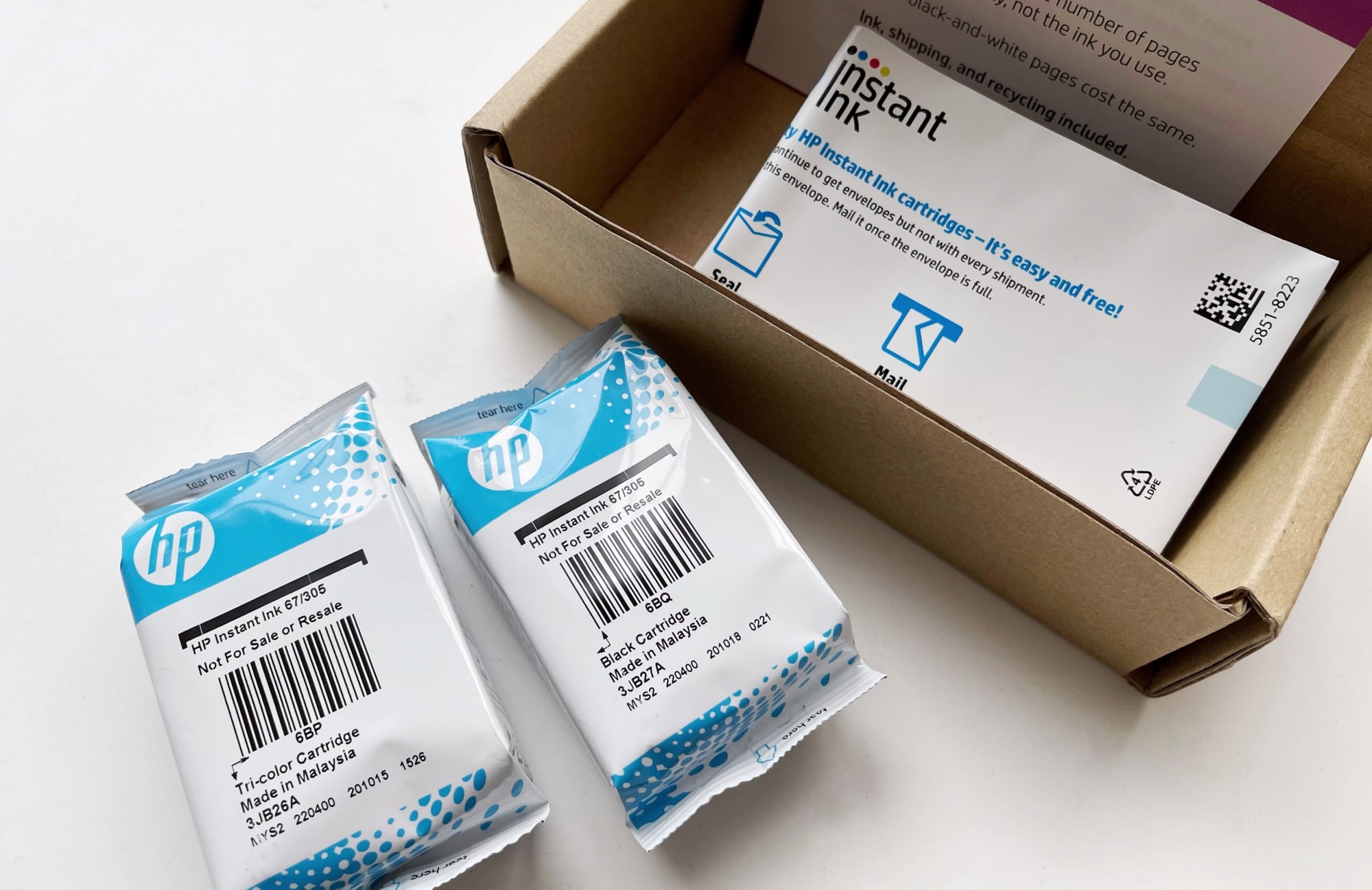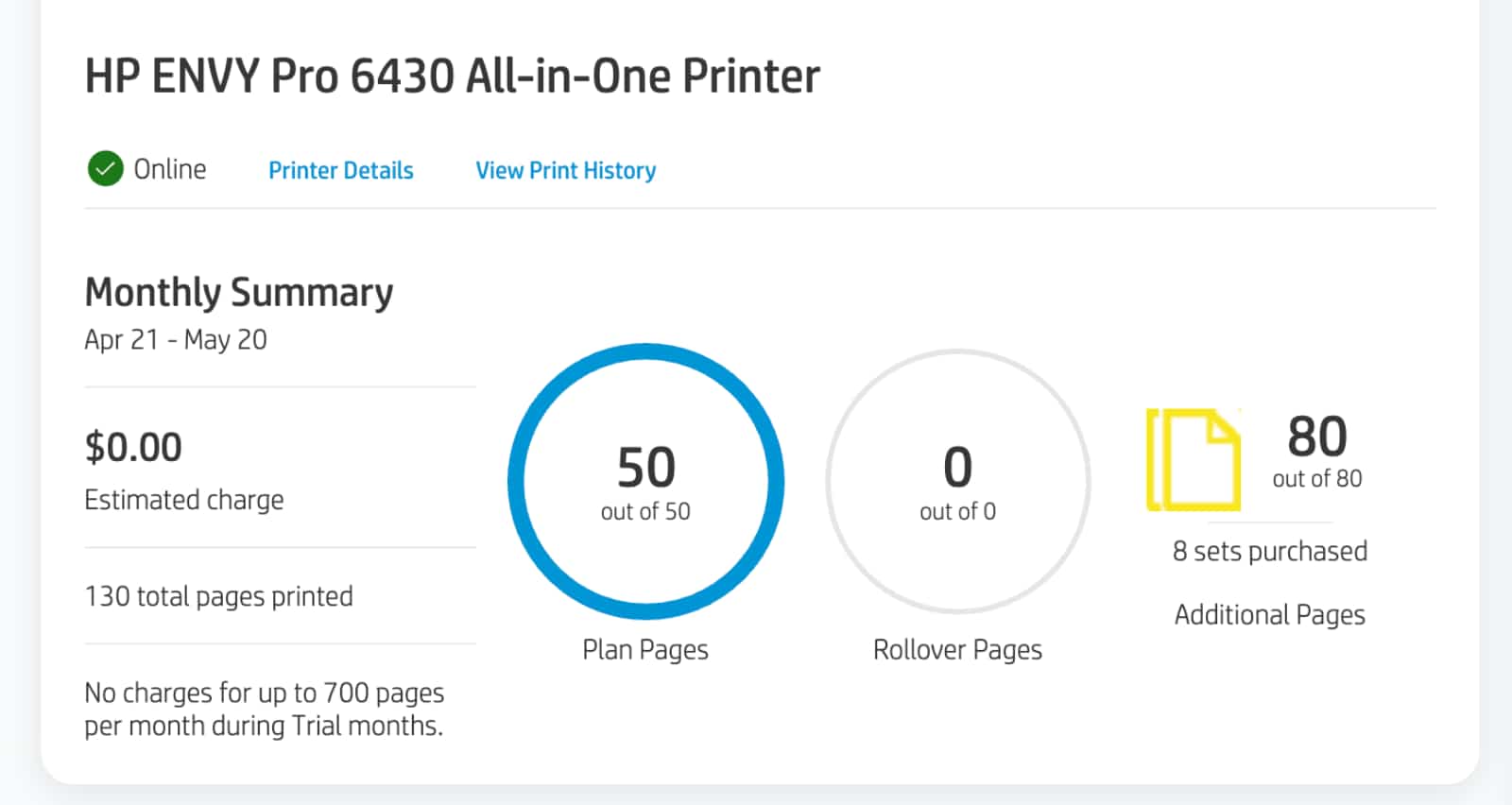Quick review
The good
The not-so-good
If you’ve ever been frustrated by running out of ink, HP Instant Ink service might just be a win, especially if you print mostly photos.
Printing mightn’t be as big as it once was, but there are still plenty of people out there who love to send what’s digital to a physical piece of paper.
Whether you’re one of those people that loves to print recipes so you can have them kitchen-side, printing reports for painting with big ol’ swabs of yellow highlighter and sticker flags, or someone that adores printing photos to send them to the family, printers are still sticking around and a part of your life.
But while the printer is typically reliable, the ink supplies might not be. You might use your printer often and keep a spare supply on hand just in case you run out, or you might be a little more like everyone else and, well, not. Printer consumables are often the last thing we think about, getting them on hand for use only when we really need them, which is typically the day after the printer has run out of ink.
HP Instant Ink goes for a different approach, with HP sending you ink as you begin to run out, meaning you’ll always have some if you do run out. The idea makes sense, but it comes with some catches with the concept essentially being a managed ink service where you pay for how many pages you’re going to print out.
HP’s Instant Ink is therefore a little different from how most Australians buy ink for the printer they have, if they have one, and so finding out whether it’s right for them requires a bit of a test and review. Is it a worthwhile subscription, and would HP Instant Ink make sense for your printing needs?
What is Instant Ink?
A bit of a strange name given all ink is instant, HP Instant Ink is less about the instantaneous nature of ink being printed, and more about the instant nature of you having supplies on hand. To make this happen, it’s more of a subscription service for your printer, or more specifically HP printers.
If you own an HP printer from the past few years or buy one today, you qualify for Instant Ink, which is a subscription approach to ink. The idea isn’t unlike subscribing to other services such as Spotify or Netflix in that you’re provided access to ink-as-a-service, easily the strangest “XaaS” (something-as-a-service) we’ve heard of, but go with us here.
HP Instant Ink works on the logic of page count and ink supply, whereby you’ll pay a monthly cost for how many pages you expect to print, and receive ink in the mail based on when your ink is running out. If you find yourself printing more in the space of that month, you can move to a higher plan or boost your page supply with a booster price, but once you’ve hit the amount you’re set for, HP will stop letting you print pages.
What does it do?
To make this work, HP connects your printer to the cloud where your print output is monitored. Essentially, the printer reports back to HP with how many pages you’re printing, and tells the service that, coordinating volume based on quotas.
Regardless of how much you sign up for, HP Instant Ink will send out very large ink cartridge sets for your printer, which in turn should last a while based on how much you intend to print, but that will lead you to the idea of what’s so “instant” about Instant Ink.
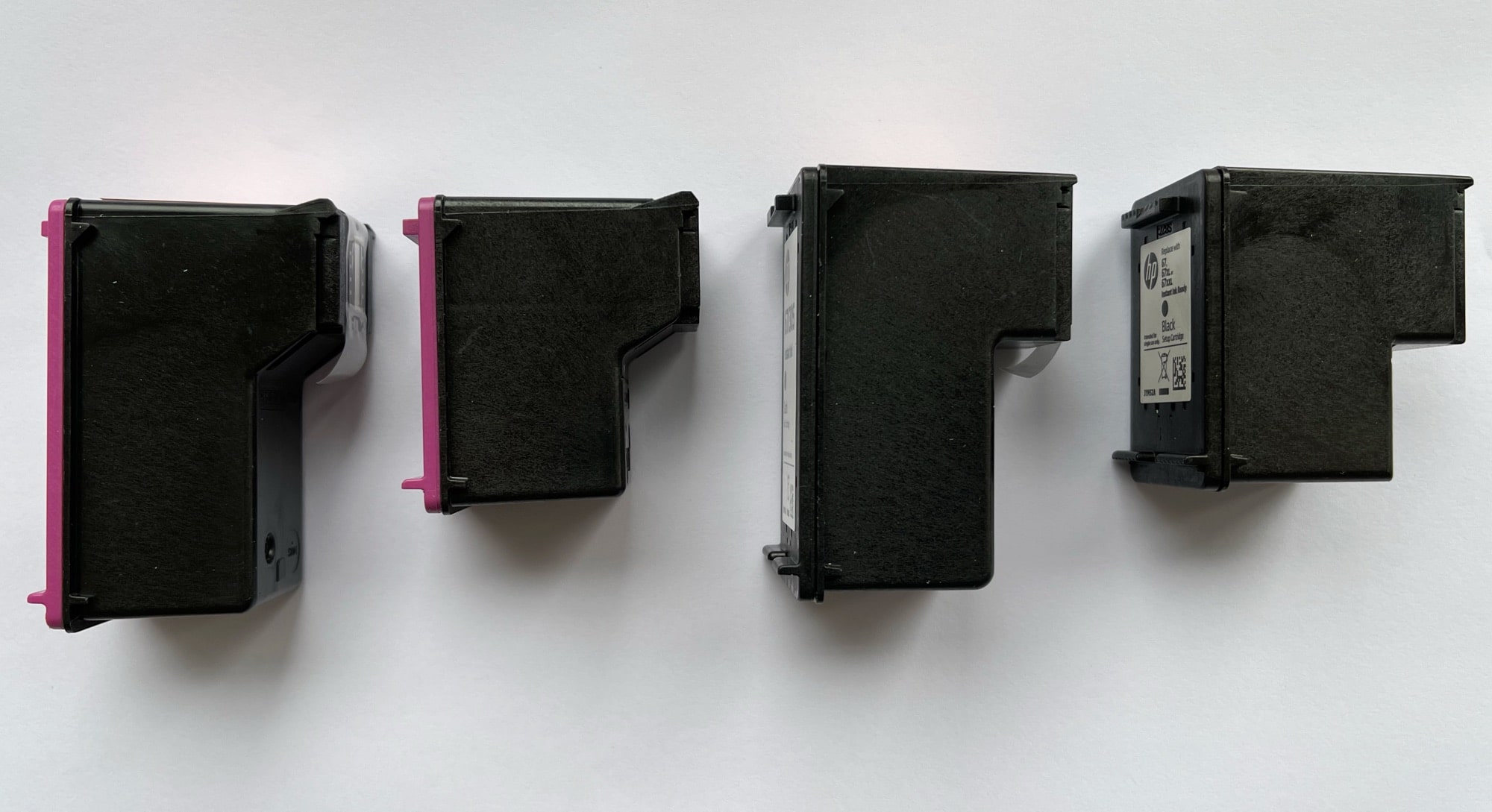
What’s so “instant” about HP Instant Ink?
While all ink is technically instant, HP uses the phrasing to suggest that as you’re running out of ink, the company will automatically send you a cartridge in the mail. That means by the time you’ve run out, you should already have another set of cartridges waiting for you instantly. It even comes with a post paid envelope to let you send the old cartridges back for recycling, which is a win.
What are the catches of Instant Ink?
All subscription services come with catches and loopholes, however, and HP Instant Ink is no different.
For instance, music services tend let you install them to several devices at once, allowing several people to use them if needed. However, they also only let you run one at a time, meaning if you’re doing that sharing thing, looking at a family plan might be a better way to share accounts, and may save money.
HP’s Instant Ink comes with its own, because the measurement of output comes not from ink, but rather from pages. Simply put, you’re subscribing to a service that lets you pay based on how many pages you intend to print, even if the ink output is dramatically different per page.
For instance, a page of copy like for a report uses a much smaller amount of ink than a 4×6 inch postcard photo, and likewise for an A4 photo. And yet, in the world of HP Instant Ink, a page is a page. The $9.99 cost for 100 pages per month is the same regardless of what you print.

Is it worth your money?
This means if you intend to print a bunch of photos, you’re effectively getting a better ink economy than someone who intends to print a bunch of text pages, because in the world of HP Instant Ink, a page is a page.
It means the $5.99 monthly cost for 50 prints of 50 photos monthly will likely feel like a better use of ink than for pages, especially if you print in the best quality. Granted, the HP Envy 6430 we had on review had issues printing to very, very high quality paper, and wasted a few sheets of speciality Harman paper struggling to print to its size, but that’s besides the point.
Comparatively, printing 4×6 postcard prints actually sits at around 10 cents per print from at least one major print place we checked. At $9.99 per month for 100 pages, that’s more or less the same, though you would have to buy your own paper, costing you a little more, but meaning you don’t have to venture out of the house to collect your photos.
Essentially, if you’re a printer of photos, the HP Instant Ink service might be better value than buying separate ink cartridges over the course of a year, especially given you get two months free service to try it out.
The service also gives you a web dashboard to work from, mostly to see how your page economy is going for you, and it’s here you might find some nuggets. For instance, in our time with Instant Ink, we found we had printed more than expected, thanks in part to double-sided prints acting as two prints on one page, and not the one. It meant we churned through our expected 50 pages per month faster than anticipated, which is good given we had a two month trial to work with.
In a way, that two month trial kind of works like a measurement system, letting you gauge how much you think you’ll use, but it’s also worth noting that you don’t have to subscribe to HP Instant Ink if you don’t want to.
If you have an HP printer, you can try a subscription and then unsubscribe, switching back to buying physical cartridges as and when you need them. But if you do subscribe, you’re there until you unsubscribe, much like with Spotify, Netflix, or any number of services out there in the world.
What does Instant Ink need?
However it’s also worth noting that HP Instant Ink isn’t compatible with every HP printer, as laser printers aren’t on the list. If you have one, you can’t join up, as this is an inkjet-only affair, and the same is true with dye-sub printers, too.
HP still makes both — we reviewed an HP dye-sub last year! — but neither qualify for the Instant Ink party, which is a bit of a sad face.
Likewise, you may find some of your print bandwidth wasted on failed prints, a problem we noted might occur from the launch. Unfortunately, there’s no way to really deal with this, beyond contacting support, even though there’s no way to do this from the Instant Ink dashboard. Maybe something to come.
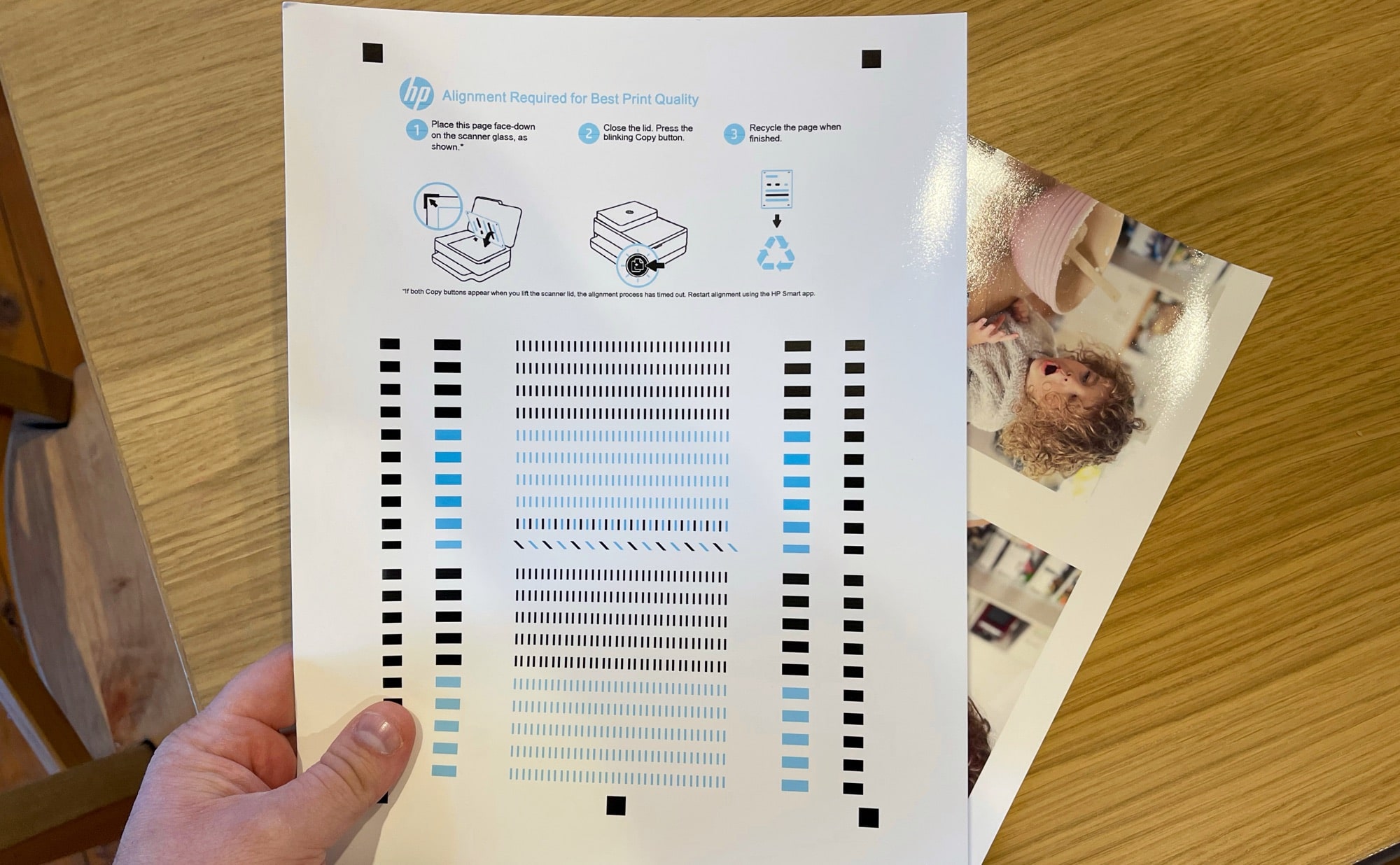
Yay or nay?
As to whether the managed printing service of HP Instant Ink is worth your money, that will depend entirely on how you intend to print, what you intend to print, and most importantly, how much you plan to print.
If you’re expecting the printer to work mostly for documents and school reports, don’t expect to get the best ink economy from HP’s Instant Ink offering. But if you’re still not sure how much you’ll need the printer for and want to make sure ink is covered, a smaller plan might make sense.
Alternatively, buying the ink cartridge might make more sense if you intend to use the printer less.
However, for the HP Envy 6430 we tried this with, the HP67XL black and colour cartridges were $45 each, basically costing $90 for the privilege of replacing both. Each offered a rough yield of 240 and 200 sheets, respectively, which on the $9.99 plan offered nine months HP Instant Ink plan. With that in mind, HP’s Instant Ink might be better value for people who intend to print a lot, rather than those who intend to print only on occasion.
That makes it surprising value for some, for sure, and worth checking out if you own an HP printer. If anything, it might just get you printing more often.



